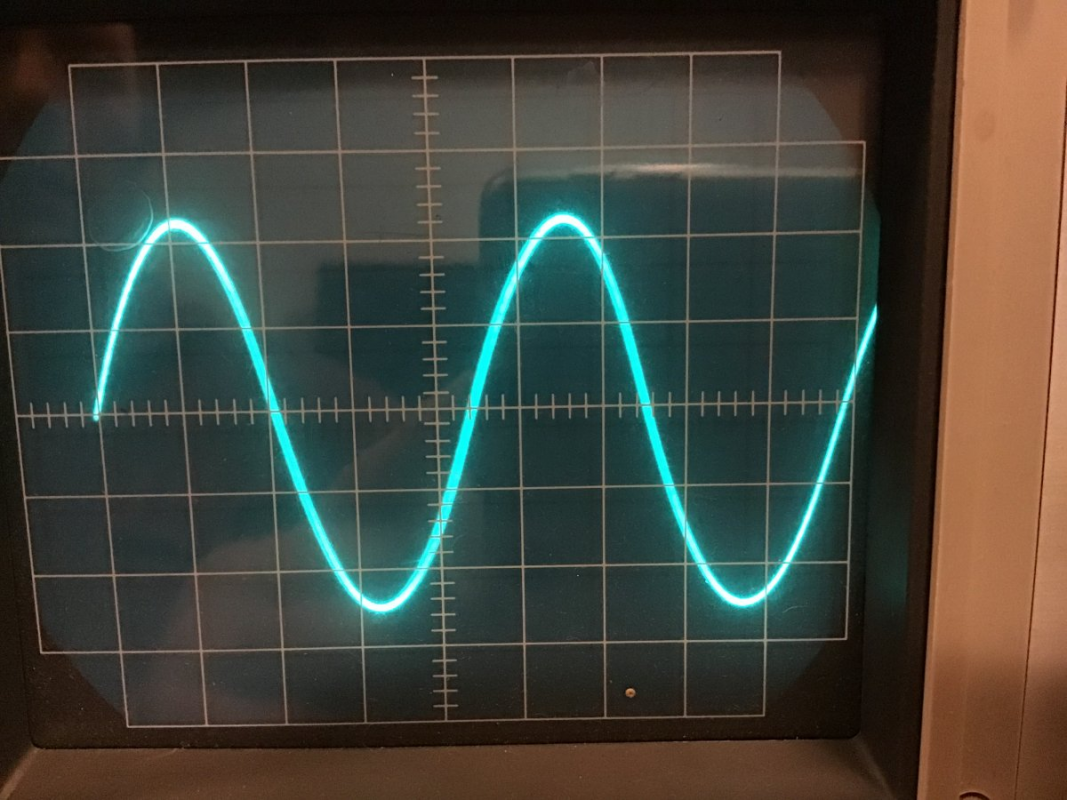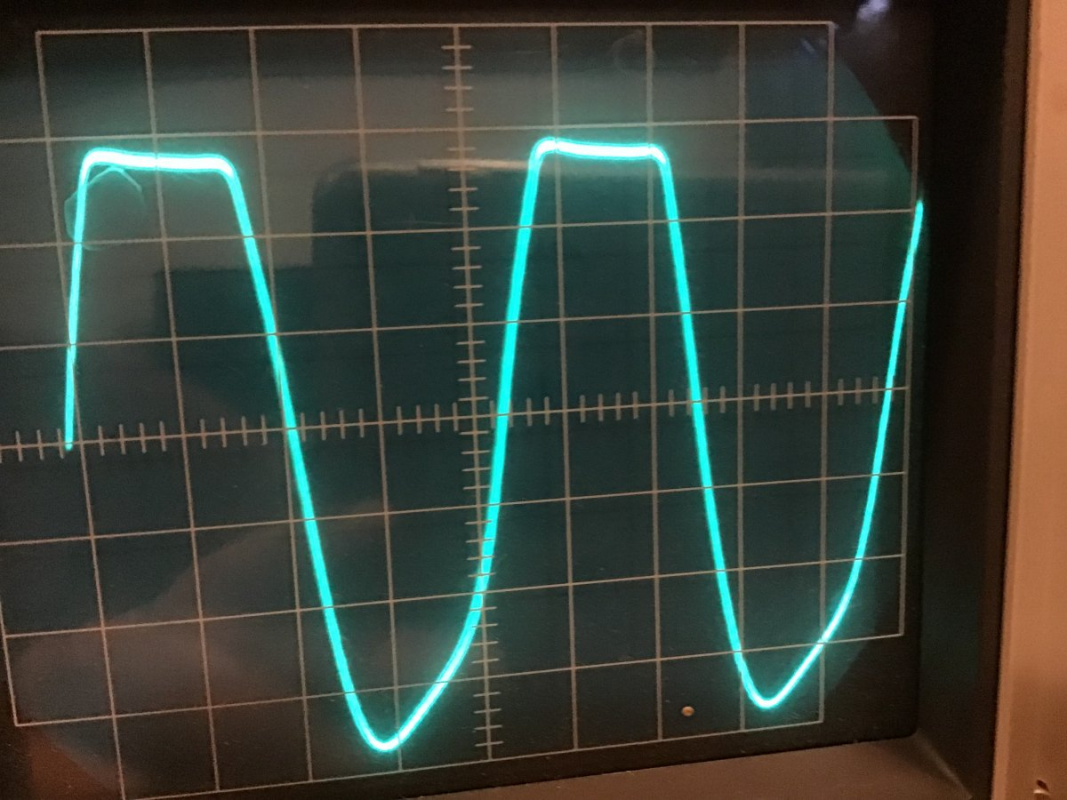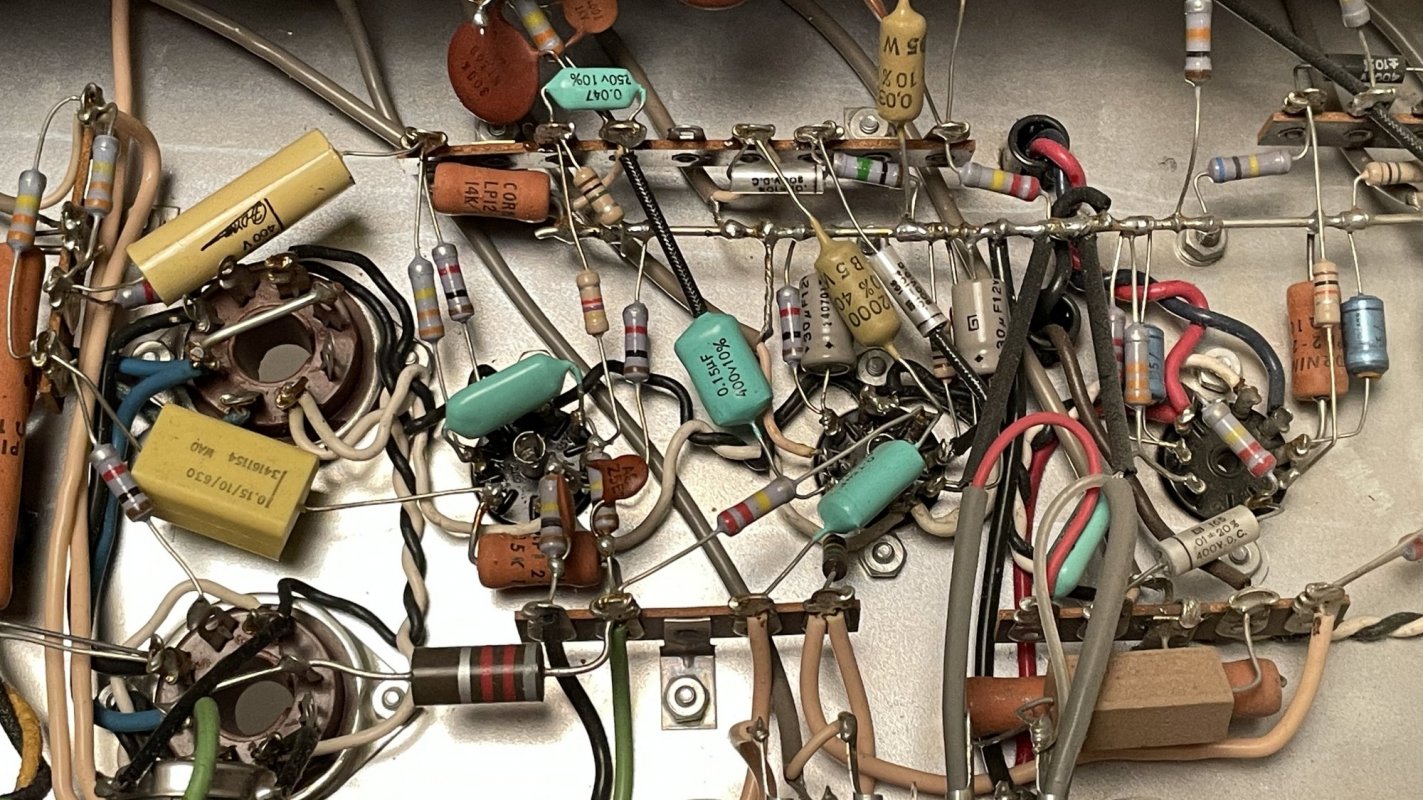Yeah, but what's actually creating the distortion? A painter with a paint brush can create a distortion on the canvass with using various hand movements driving the brush. So what's the brush in an amp? I need more analogies to understand.
The way a tube or transitor causes distortion in an audio circuit is the signal being too "big" for the specified component to handle. You might of heard of this as "clipping" because that's exactly what's happening - the tops and bottoms of the sinusoidal wave are being clipped off. Here are some pics I stole from this link:
https://www.tdpri.com/threads/cutoff-and-saturation-shown-on-an-oscilloscope.989589/
Here's the original wave (guitar signals aren't this clean - this is a pure wave for testing):

With the signal boosted to the point of "saturation", the amplifier runs out of "clean headroom" and can't make the wave form bigger (this is what an amplifier does - it makes the wave larger in the Y axis). Because the amplifier has run out of headroom, it just loses the tops of bottoms of the wave because the wave no longer "fits" through the component. The tube or transistor has become saturated and just can't amplify anymore. BTW this is why amps have gain stages - if you amplify cleanly you can only go so far, but if you take that amplified signal and amplify it again, you can take advantage of the next stages clean headroom. Also some tubes/transistors have higher capacities than others.

Tubes and transistors saturate very differently. A tube is a very analog device and so has a very organic distortion profile where the tips of the waves look very different than when a transistor clips, because those tend to saturate with more of a very flat line which tends to sound harsh and possibly unpleasant, though when wrangled well (like in a fuzz pedal), transistor saturation can be pretty interesting. Additionally old germanium transistors saturate in a very different way than modern silicone transistors do.
For an analogy, did you ever play "telephone" as a kid where you tied a string between two cups and then talked through the string (that had to be taught) over a distance? That string was actually providing an AC signal produced by the microphone (cup) that converted your voice to an AC signal over the wire (string) to a speaker (the other cup).
Imagine if you could put that string into a tiny tube that was *just* large enough to hold the string and the space it needed to vibrate at normal volume. The louder you talk, the more the string moves. If you talk loud enough, you'll overdrive the string and it will start to hit the tube, at which point your voice will sound funny on the other end because the string has run out of available headroom. There's literally not enough room in the tube for the string to vibrate when you yelled. Talk normally and it will sound normal again. It's the same with AC signals in an amplifier.



